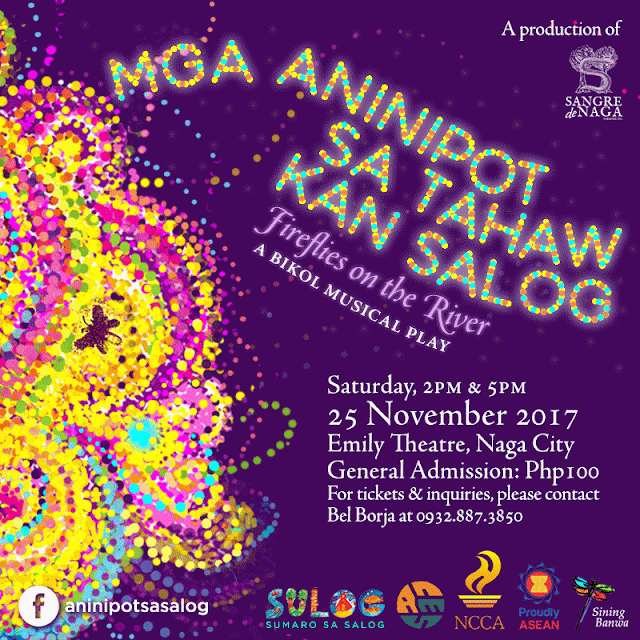A few elementary lessons

THERE ARE THINGS that remain adherent to memory despite ardent psychotherapy and years of forgetting. They are like tealeaves deposited at the bottom of every teacup; only after consuming everything will they reveal themselves to us. Western diviners, however, would only warn us of the images that tealeaves might conjure. While a few might come as messages of good fortune, the rest will surely be auguries of woe. And they will leave us with the counsel that we can no longer do anything about it.
Well, for this issue, I want to share a few lessons from the past, these were actually some of the things I have learned during my elementary years in a public school. I have learned to unlearn them after all these years. Here they are:
(1) I remember one of my teachers trying to lead us into a visualization of the Cultural Center of the Philippines. She was describing something very big, an edifice that stretched from Lupi down to Libmanan; that Tanghalang Nicanor Abelardo can house a whole city, and that the CCP was a world renowned structure. Surely, this Leandro Locsin creation is world renowned. But I am wondering why the greatness I have seen of CCP based on my teacher’s description failed to make the structure into the list of the new seven wonders of the world. When I tried to go back to my elementary textbooks—each of us had a textbook for each of the subjects—I found a very rough photo of the CCP, something which would surely fail to create a more precise imaginative idea of what this place all about.
(2) I was in grade two—yeah! grade two—when our teacher showed us Lotlot de Leon and Monching Gutierrez’s Prinsesang Gusgusin for a movie analysis. I managed to find a rare copy of the film from a professor of mine in UP and I watched it again. I enjoyed the film, with occasional laughs and puzzlement because of cinematic lapses and the ridiculous performance of the actors. But that’s not the main point. After Prinsesang Gusgusin, we were made to watch an action film entitled ‘Kidnapped.’ No, it was not the one by Robert Louis Stevenson. It was something full of shootouts, ambushes and drugs, and we were in grade two. Those were the betamax days in Lupi. Those who had betamax sets would let others watch for a fee of about one or two pesos. In the class next day, my teacher asked us, “Anó nganì si pigdálan ta suudmâ?” The class replied in chorus, “Prinsesang Gusgusin!” She asked again, “Anó pa?” Only a few answered, “K-kid-ná-ped...” Our teacher confirmed the answer, “Alright, kid-ná-ped.”
(3) I loved History as a subject, no matter how we were made to memorize all the names, places, events, figures, etc. In the end, studying History somehow helped me discover my sense of self as a Filipino or a Bikolano. Elementary History popularly known as Heorapiya, Kasaysayan, at Sibika or Hekasi was always devoted to studying Philippine History. Our textbooks usually covered history from the time Ita, Indones, and Malays came over up to the assasination of Ninoy Aquino. One of my History teachers reprimanded me for insisting that Aquino was a martyr-hero. Likewise, I almost got a spank on the palms for insisting that Hare, Hawes, Cuttings Act should not be pronounced as Há-re, Há-wes, Katings Akt.
(4) Perhaps, the thing that still haunts me to this day was the pilósopong remark of one of my Math teachers that the railroad tracks are not an example of parallel lines. The whole class laughed at me, I felt humiliated; I believe they all agreed with our teacher. Until today, I would still ask myself if indeed railroad tracks are an example parallel lines. A little part of me is skeptical. Sigh. If they are not parallel lines then what are they?
It’s already been 17 years since I graduated from the elementary school. These things have just become points of ridicule, sadly, during my solitary moments. However, I wonder if things like these still happen in our schools. Or did it even get worse? Did CCP expanded enough and outdid Glinton Ervas’ elusive political platform of literally placing Naga under one expansive roof? Or perhaps, are our students being hol-dá-ped (if only there is holdapped for robbed) of the proper is-pé-ling and pro-náwn-syey-syon? Or did Jean Jacques Rousseau after all transformed into a woman because his name is pronounced as ‘jean’ as in gin já-kes? And, yes, what really then are parallel lines?
Where do we go from here?
Photograph courtesy of Kenneth Pornillos


Comments